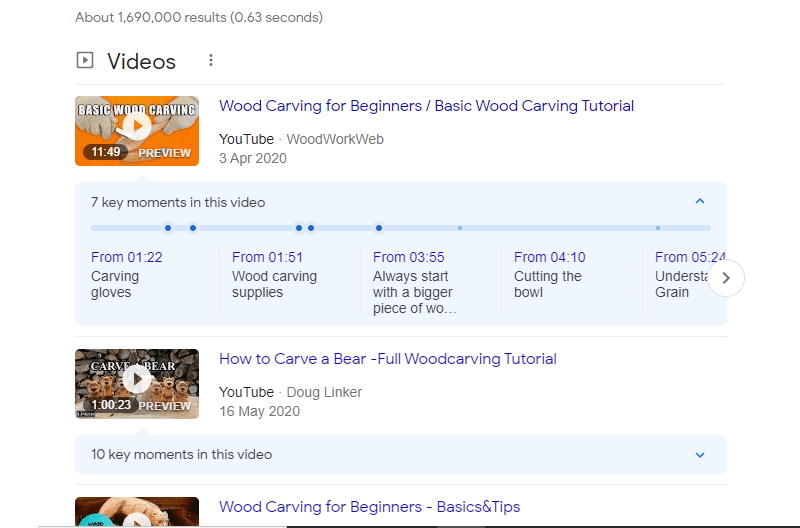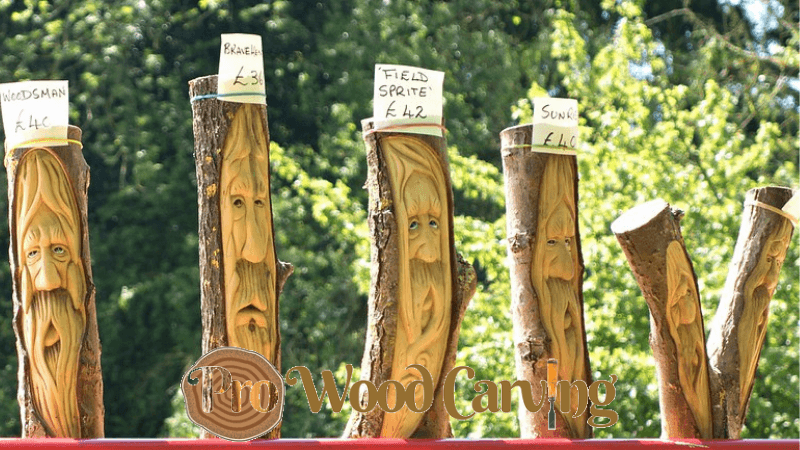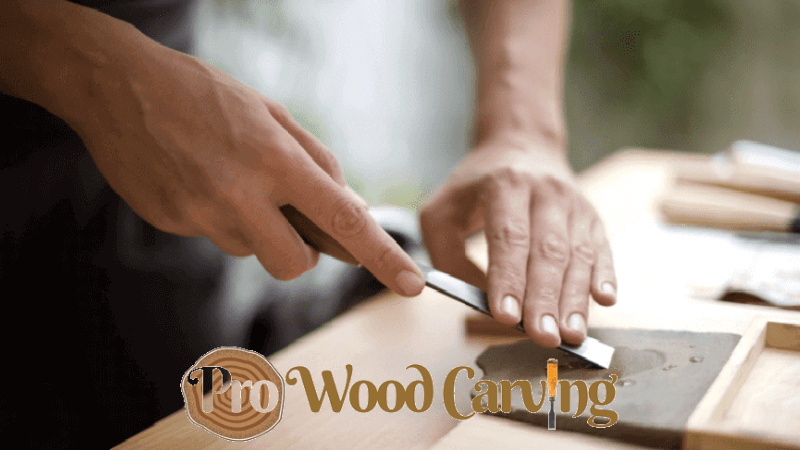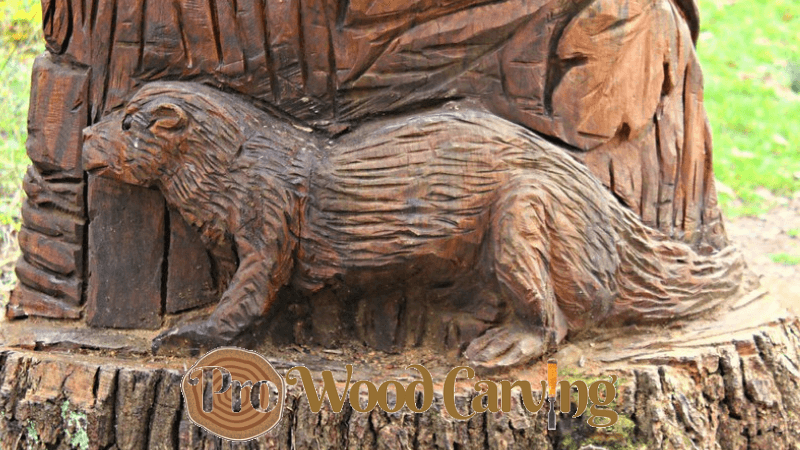Woodcarving is a craft that takes patience and time to hone and get better at. Woodcarving comes from experience and practice, not talent. Thus, mastering it takes lots of time. Like any other craft, approaching wood carving from one angle will also improve your chances of getting better.
How long does it take to carve wood?
The time it takes to carve wood is dependent on the complexity of a project. On average, it can take about 30 minutes to carve a small project or over one year to carve a large detailed project.
How to Improve Your Woodcarving Skills
Whether you are using manual tools or powered ones, here are a few things you can do to achieve better results when carving.
1. Find Online Woodcarving Tutorials
Starting out in woodcarving might seem like an uphill task. It often seems like there is little time to learn and practice everything you need. However, to learn faster, you can look for woodcarving tutorials to gain the knowledge and experience you need.

In addition to video guides, there are hundreds of woodcarving videos online where different users showcase their techniques. They also show how they carve various projects from start to finish.
2. Work your Way from Small to Bigger Items
Once you’ve learned a few techniques from video tutorials, it’s time to start carving. Like any new hobby, the best way to learn is to make things happen. You can try different woodcarving cuts, learn to carve various types of wood, accustom yourself to the tools, and take a few basic carved items.

Beginner-friendly woodcarving projects include gnomes, spoons, and candle holders. Once you’ve carved a few smaller pieces and start feeling confident, you can work your way up to bigger items. You can follow along with a youtube video to carve more complex stuff.
3. Sharpening Woodcarving Tools
A woodcarver needs to know to sharpen knives properly for both precision and safety. Whether you’re an expert or beginner, the condition of your knives makes a significant difference in the carving process.

A sharp and well-maintained knife makes your carving process easy and fast apart from precision and safety. You can easily make cuts and work on a project faster than a dull knife.
How do you know your knives need sharpening? You can slice a paper, give the knife a thumbnail test, or even shave some hairs on your arm. However, the surest way to know a sharp knife is by making a cross-grain cut. If the cut is fuzzy, it is time to sharpen that knife.
4. Keep Practicing
Like any hobby or craft, practice makes perfect.

The same goes for woodcarving; practicing by trying out different projects is the best way to excel. Take a piece of wood and practice different woodcarving cuts. It might seem futile, but all this is not in vain.
> Recommended Reading: Wood Carving Guide for Beginners
Easy Woods to Carve as a Beginner
As a beginner, carving softwoods is the best way to carve faster. The higher the density of the wood, the harder and longer it will take to carve. A hardwood such as Oak is harder to carve as a beginner than softwood such as Basswood.
Here are some Beginner-friendly woods to start your woodcarving journey:
- Basswood
- Butternut
- Aspen
- Balsa
- Yellow cedar
Read more about the easiest wood to carve as a beginner.